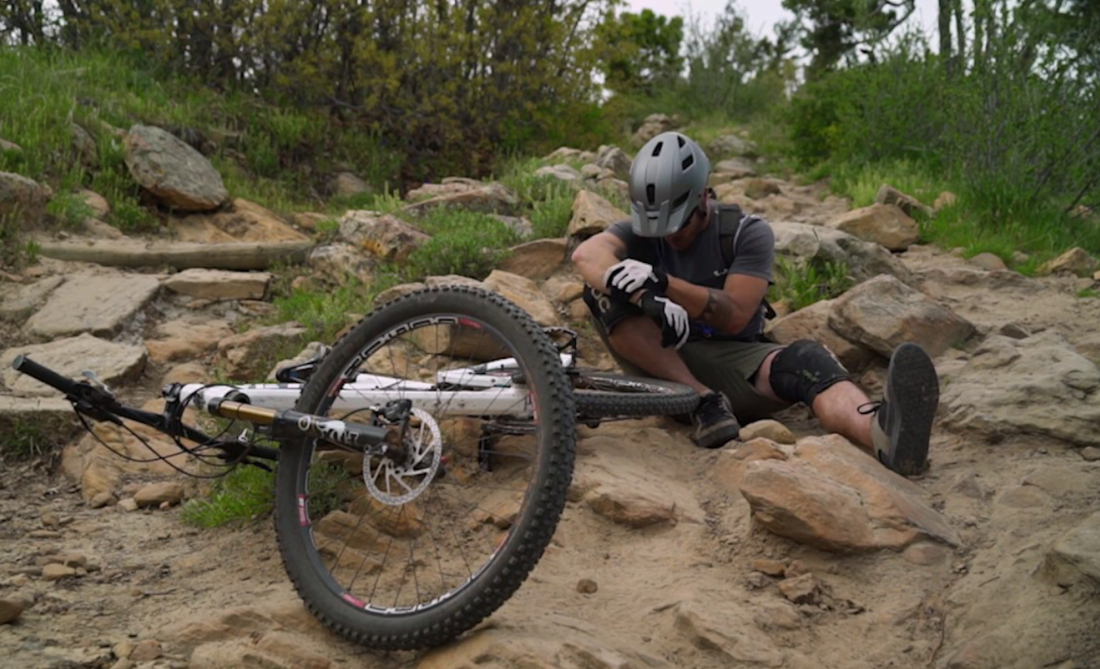Time for mountain bikers to take a page from snowsports.
--by Andru McCracken, The Rocky Mountain Goat newspaper
Last week we learned that a woman broke her spine during Valemount's
Annual Bikefest. She survived, but she and her family are still
waiting to see the extent of the injuries at a hospital in Edmonton.
The Rocky Mountain Goat wishes her a full and speedy recovery.
It was a traumatic, life changing event and naturally the woman and
her family didn't want to become headlines. This makes a ton of sense
to me. The woman's identity should be protected.
I am a proponent, however, of talking openly about the events that
lead crashes, even if it's anonymously.
It's time to create a place where riders can publish an anonymized
serious injury report.
Accidents happen. There's no need to downplay them. If you think that
accidents aren't a part of mountain biking, you're either from some
gravity-free planet or you are in denial. Dr. Annie Gareau, one of
the co-authors of a 2012 study on the Epidemiology of Mountain Bike
Park Injuries at the Whistler Bike Park, and an emergency room
specialist at the Whistler Health Centre was quoted as saying a
general rule of thumb is that one in 1,000 skiers are injured, one in
100 snowboarders, and one in 10 downhill cyclists.
That said, those of us who ride accept the risks. Hit by a tree in a
windstorm? Thrown off the bike after crashing into the same tree?
This isn't a ball pit at a theme park. It's a mountain. If you lost
your nerve on a steep section and hit the front brakes and ended up
in a patch of stinging nettle with a broken clavicle, it's on you.
The responsibility at Valemount Bike Park lies with the rider.
This isn't about laying blame. This is about building a culture of
smart safe riding. It's about getting better and sharing what went
wrong, so the next person doesn't find themselves in the exact same
circumstance with the exact same consequences.
The potential value in this is echoed by the work of the local health
clinic. They have shared injury patterns with trail maintainers to
great effect, causing changes in trail layout and designations.
When there are really serious injuries a different kind of report
needs to be made: A report from the injured. What trail was it on?
What was the feature? Your skill level? The number of times you've
ridden the park and that trail in particular? What led up to the
crash? What would have helped?
Valemount is good at this already. Snowmobiling and backcountry
skiing are high risk sports, and the risk of avalanches is
notoriously easy to underestimate and hard to predict but proponents
of the sport have been making mad progress. The latest move is for
recreationalists to submit mountain condition reports to the
Avalanche Canada website. People share how much new snow there is,
signs of instability or avalanche activity. It doesn't prevent
avalanche injuries or fatalities altogether, but it ups everybody's
game and raises awareness.
Valemount Bike Park could be a safer place, but the onus here isn't
on the trail maintainers, or the doctors at the clinic. The people
with power to help are an unlikely and unlucky crew: the injured.
It's a pretty inglorious task: How I flubbed it and why. But in the
future, I hope one of the first things we think of when we're flying
through the air all akimbo is, "What I am I going to include in my report?"
With any luck it will save some lucky soul no small amount of grief.
To read this original article in Rocky Mountain Goat CLICK HERE.
To read Dr. Garuau's report CLICK HERE.

 RSS Feed
RSS Feed